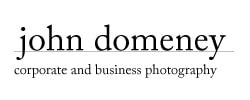
Industrial timelapse is the photographing a subject or location from a fixed camera position over a long period of time, from minutes to months. When played back at normal speed, it takes what was a a slow process and shows the transformation in a matter of seconds.
Timelapse cameras are fixed on site in a position that captures the scale of the project from start to finish. Images can be captured at different rates from seconds, to minutes or days.
The camera are housed in a waterproof housing that protects in all weathers, but can also be access to retrieve files mid shoot. This is extremely useful for social updates as well as assessing progress.
Time lapse is a great solution for :
- Major building construction
- House or building development
- Mining
- Logistics movements
- Event builds
- Shop fitouts.
Basically any process that takes place over a period of time can be captured.
Short duration timelapse
- Timeframes from a few minutes up to a day.
- Compact weatherproof cameras
- Video resolution up to 4K.
Long duration timelapse
- Time frames in days, weeks, months, the sky is the limit
- Shot by the hour or by the day
- Set timer to capture during work hours only
- Compact weatherproof cameras
- Resolution up to HD
- Download mid shoot for updates
How affordable is it?
Long duration timelapse is a convenient and affordable way to document your projects.
Chargeable items include:
- Consultation meeting and location checks.
- Setup of camera.
- Download and delivery.
Important considerations with timelapse
Duration of the end video.
If you have a specific timeframe to work to, for example 10 seconds. At 25 fps (frames per second) that is 250 frames.
Standard video speed is 25 frames/ images per second. A job taking 1 image per day for 25 days will result in a video only one second long.
To make it a better length- 10 seconds for example. Start with the number of frames. 10 seconds * 25fps = 250 images. /25 days = 10 images per day.
Location of the camera.
The main idea being- place the camera where it will see the job when it is finished- not what looks like a good frame at the start.
The camera needs to be fixed and not disturbed.
Once a camera is placed it needs to remain undisturbed and with a clear view for the duration of the shoot.
If the camera is disturbed the image will change and may not be covering the intended subject matter. This may not even be noticed until the intended run is complete.
Regular checks.
For the reasons above and other ideas- updates or reviews of footage, a regular check and down load of the images is recommended on long duration projects, this could be every few weeks or monthly.

